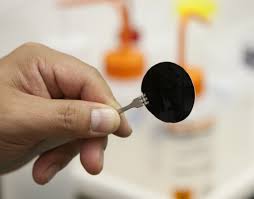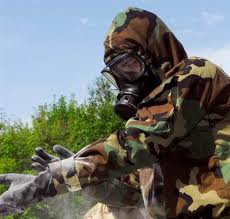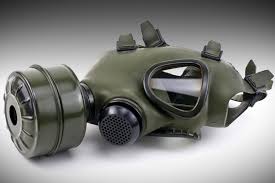
Military is the organization certified by its greater society to make use of lethal force, generally comprising use of weapons, to protect its country by fighting actual or perceived threats. They are the most important part of our country that is why they must provided best facilities so that it will be useful for them. That is the reason our scientist of Lawrence Livermore National Laboratory are developing a new apparel that modifies according to environment and repels hazardous agents using novel carbon nanotube fabric.
Material of uniform will be created to endure rapid transition from breathable state to defensive state. Highly breathable membranes would have pores made of few-nanometer-wide vertically aligned carbon nanotubes (CNT) that are surface altered with chemical warfare agent-responsive functional layer. Response to threat would be activated by direct chemical warfare agent attack to membrane surface, at which time fabric would switch to protective state with closing CNT pore entrance or by shedding contaminated surface layer.
Uniform will be like smart second skin which act in response to environment. Without requirement of the external control system, the fabric will be capable of swapping reversibly from highly breathable state to defensive one in reaction to existence of the environmental threat. In protective state, uniform will block chemical threat during maintaining a good breathability level."
High breathability is critical needs for defensive clothing to stop heat-stress and exhaustion when military workers are occupied in missions in contaminated environments. Existing defensive military uniforms are based on heavyweight full-obstacles protection or permeable adsorptive defensive over garments which can’t fulfil critical demand of simultaneous high comfort and protection, and offer a passive rather than active response to environmental threat.
To give high breathability, new composite material will take benefit of unique transport properties of carbon nanotube pores that have two orders of magnitude faster gas transport rates when compared with any other pore of equivalent size.
Small-size prototype carbon nanotube membranes can give outstanding breathability despite the very small pore sizes and porosity. Large area functionalized CNT membranes will also be developed by the scientist.

Biological agents, likes bacteria or viruses, are close to 10 nm in size. As membrane pores on uniform are only few nanometers wide, these membranes will simply block biological agents.
Though, chemical agents are much smaller in size and need the membrane pores to be capable to react to block threat. To make multifunctional membrane, the team will surface alter original prototype carbon nanotube membranes with chemical threat receptive functional groups. Functional groups on membrane will intellect and block threat like gatekeepers on entrance. Second response scheme also will be designed: Similar to how living skin sheds off when challenged with dangerous external factors, the fabric will exfoliate upon reaction with chemical agent. In this way, fabric will be capable to block chemical agents like sulfur mustard (blister agent), GD and VX nerve agents, toxins like staphylococcal enterotoxin, and biological spores for example anthrax.
The project is financed for $13 million over 5 years with LLNL as lead institution.
Development of chemical threat responsive carbon nanotube membranes is a immense example of novel material's potential to give innovative solutions for Department of Defense CB needs," says Tracee Harris, DTRA science and technology manager for Dynamic Multifunctional Material for a Second Skin Program. "This innovative apparel would let the military forces to work safely for long time periods and fruitfully finish their missions in environments spoiled with chemical and biological warfare agents."

Laboratory has history in designing carbon nanotubes for broad range of applications comprising desalination. "We have advanced carbon nanotube platform to create and increase to make advancements in protective fabric material for this new project. Novel attires could be developed in the field in less than 10 years.